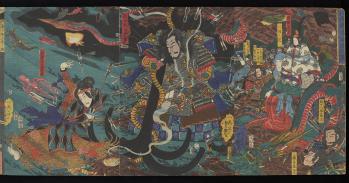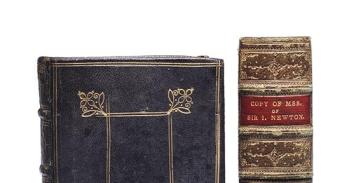The story surrounding the oldest written document at one of the world’s great research libraries has been unravelled in a new film.
The story surrounding the oldest written document at one of the world’s great research libraries has been unravelled in a new film.
This little piece of clay is packed full of information from 4,200 years ago
Nicholas Postgate
A Stray Sumerian Tablet has been published today by Cambridge University Library and focuses on a diminutive clay tablet, written by a scribe in ancient Iraq, some 4,200 years ago. A description of the tablet along with high-resolution images and a 3D model can also be seen on Cambridge Digital Library.
Containing six lines of cuneiform script, and roughly the size of an adult thumb, it was donated to the University Library in 1921 but then lost to sight for many years before its rediscovery in 2016, during research for the Curious Objects exhibition, held as part of the University Library’s 600th anniversary.
The full translation of the laconic text runs as follows: 18 jars of pig fat – Balli. 4 jars of pig fat – Nimgir-ab-lah. Fat dispensed (at ?) the city of Zabala. Ab-kid-kid, the scribe. 4th year 10th month.
The man named Balli turns up regularly in other texts from the same area during the same period of history, and seems to be an official in charge of a wide range of oils: from pig fat and butter to sesame oil and almond oil.
Professor Nicholas Postgate, a Senior Fellow at the McDonald Institute for Archaeological Research at Cambridge, who has studied the tablet, said: “This little piece of clay is packed full of information from 4,200 years ago. The language is Sumerian, the oldest written language, and there are six professionally written lines of cuneiform script on it.
“In the early years of the 20th century, the antiquity market in the west was flooded, disastrously, with thousands of cuneiform tablets which had been ripped out of their original context from sites where illicit robbers were working. These tablets were then distributed across the world from Moscow, to London to Chicago.
“The content is very simple, it mentions a large quantity (22 jars) of lard or pigs fat and gives the name of the responsible official (Balli). It states that this fat was dispensed in the city of Zabala. We think these jars were eighty litres each, so that means we’re talking about hundreds of litres of lard.”
Since it was displayed as part of Curious Objects, Professor Postgate has conducted further research on the tablet and plans to publish an academic paper on both the tablet and its text later this year.
“We may be able to reconstruct what’s going on in individual tablet, but we can never reconstruct the physical archaeological context from which they came, so there’s a great loss of information there,” he added.
“Since the 1920s, many other tablets from the same archive have surfaced all over the world and our own small tablet makes its own contribution to the reconstruction of a government office more than 4,000 years ago.”

The text in this work is licensed under a Creative Commons Attribution 4.0 International License. For image use please see separate credits above.




